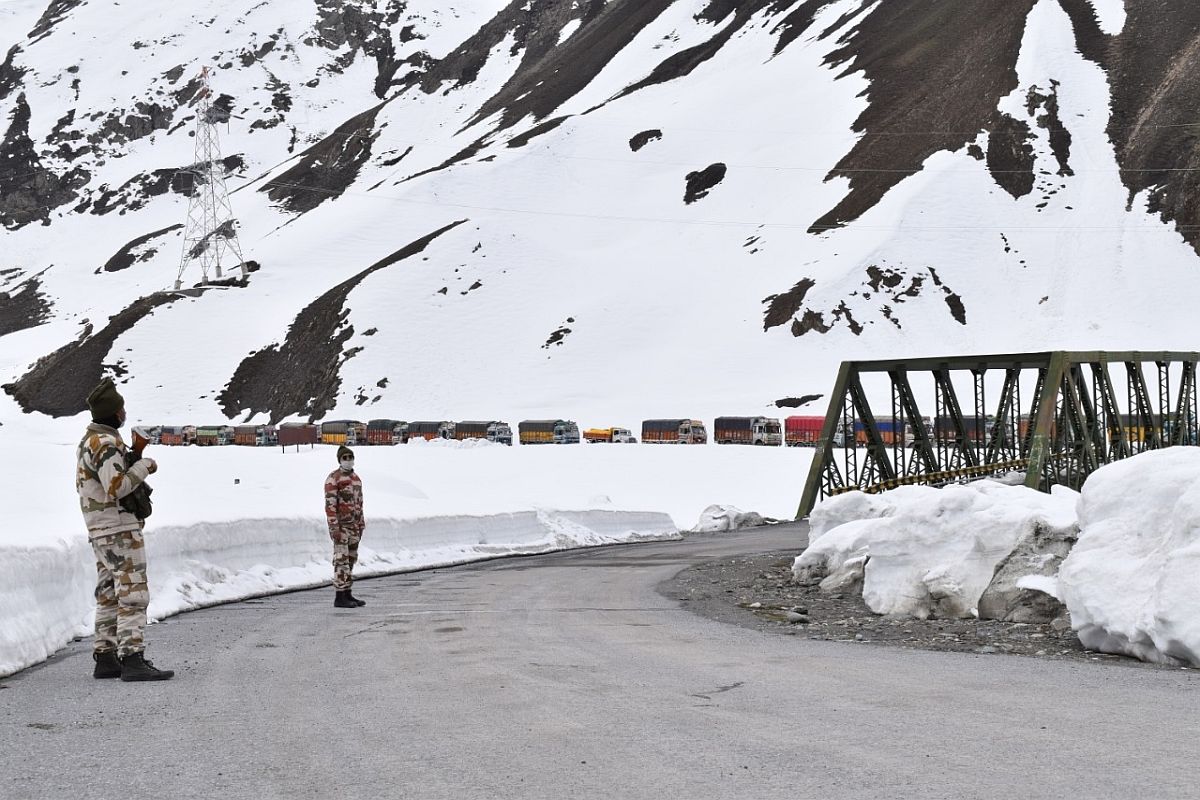China reportedly made a slight retreat at Galwan Valley, one of the flashpoint leading to standoff with India, in Ladakh region on Wednesday, in a bid to resolve the border tension between the two nations.
The China’s People’s Liberation Army moved back two kilometres while the Indian Army has moved back by one kilometre.
Advertisement
However, at another flashpoint Pangong Tso (lake), troops from both sides are stationed and are camping over there. This would be the main focus of the meeting on June 6 between top military officers of India and China.
14 Corps Commander Lt Gen Harinder Singh is scheduled to hold the Lieutenant General-level talks with his Chinese counterpart. The talks have been requested by India and will be held in the Indian Border Point Meeting hut in Chushul-Moldo, an NDTV report said.
Indian Army Chief MM Naravane is confident enough that the standoff would be resolved at military-level talks
Meanwhile, it is reported that the Chinese are camping permanently at Finger 4 that has been under Indian control. “This needs to be resolved on urgent note,” a top Indian Army officer was quoted as saying by IANS.
Further, Northern Army Commander Lieutenant General YK Joshi has reached Ladakh to review the ground situation and he is going to remain till Thursday.
In addition to it on Tuesday, India and China military representatives carried out talks to resolve the ongoing face off in Eastern Ladakh.
Division Commander Level Meeting was held between the Major General rank officers of the two sides on Tuesday afternoon to resolve the issue but in the end it remained “inconclusive”.
.No breakthrough has taken place so far even as the India Army and China’s People’s Liberation Army held several meetings to resolve face-off in Eastern Ladakh at LAC.
Several areas along the LAC in Ladakh and North Sikkim have witnessed major military build-up by both the Indian and Chinese armies recently, in a clear signal of escalating tension and hardening of respective positions by the two sides even two weeks after they were engaged in two separate face-offs.
The nearly 3,500-km-long LAC is the de-facto border between the two countries.
Indian and Chinese troops have remained engaged in an eyeball-to-eyeball situation in several areas along the LAC in eastern Ladakh, signalling that the standoff could become the biggest military face-off after the Doklam crisis in 2017.
The trigger for the face-off was China’s stiff opposition to India laying a key road in the Finger area around the Pangong Tso Lake besides construction of another road connecting the Darbuk-Shayok-Daulat Beg Oldie road in Galwan Valley.
Meanwhile, the retreat at Galwan Valley comes as China on Wednesday reiterated that there was “no need for a third-party intervention” between Beijing and New Delhi over the border dispute.
“Now the situation (at the border) over there is overall stable and controllable . China and India have a full-fledged border related mechanism and communication channel. We have capability to resolve this issue through dialogue and negotiations. There is no need for intervention of third party,” Chinese foreign ministry spokesperson, Zhao Lijian said at a briefing.
This came after it emerged that Prime Minister Narendra Modi discussed the situation at the Line of Actual Control (LAC) in eastern Ladakh with President Donald Trump during a phone call on Tuesday.
“The two leaders also exchanged views on other topical issues, such as the COVID-19 situation in the two countries, the situation on the India-China border, and the need for reforms in the World Health Organisation,” said an MEA statement.
This is for the first time that the government has indicated that the standoff between India and China has been brought up with a third country.
In the midst of the flare-ups between Indian and Chinese armies, Trump last Wednesday said he was “willing to mediate” between the two countries. He reiterated the offer on Thursday as well.
However, in a carefully crafted reaction to Trump’s offer to arbitrate, India said it was engaged with China to peacefully resolve the border row.
China had directly rejected the offer saying that the two countries did not want “intervention” from a third party to resolve the military standoff.











